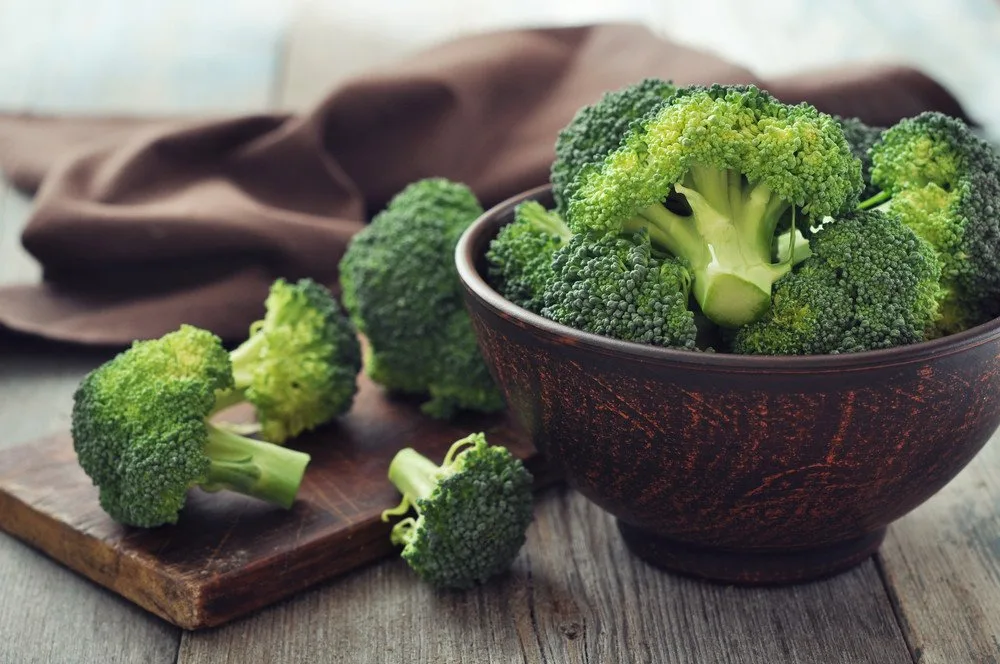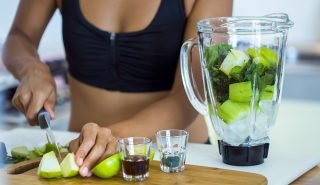Growing up, I hated broccoli. However, my mother, a self-proclaimed hippy with some working knowledge of nutrition used to tell me, if I didn’t eat my broccoli, I wouldn’t be healthy and live a long life. Imagine all of that for a 7-year old to digest. I already learned about anti-aging then. It’s not about beauty, it’s about prevention. Over the years I have come to know and love broccoli better. Of course, my adult palate, plus some good recipes help. Without a doubt, the benefits of broccoli today are just as important, if not more, than back then.
Why Broccoli?
Emerging science confirms that consuming broccoli can alter the way your genes are expressed. This vegetable plays an important role in preventing everything from cancer to heart disease. This is why it is truly an anti-aging vegetable.
In fact, a study of 4,886 breast cancer survivors found a 62% reduction in morality for women whose vegetable consumption was in the highest quartile.
Of all the common foods available in stores across the world right now, broccoli is the most researched and has the most proven studies on its health benefits. There is no vegetable to rival this green queen.
Why Broccoli Is So Good For You
Broccoli is considered one of the world’s healthiest foods. Of all the calciferous vegetables, it has the most concentrated source of vitamin C and the flavonoids necessary for vitamin C to recycle effectively.
High in sulforaphane
The vegetable is a rich source of anti-oxidants, vitamins and importantly fiber. Research has shown the plant has powerful anti-cancer activity and heart benefits, could guard against arthritis and asthma and help protect our eyesight and immune system.
The reason for this powerful status is that broccoli includes a magic compound called sulforaphane.
Inactive until activated
Sulforaphane is found mostly in green cruceferous foods. It’s in the inactive form glucoraphanin that belongs to the glucosinolate family of plant compounds. Healthline confirms that ” Sulforaphane is activated when glucoraphanin comes into contact with myrosinase, a family of enzymes that play a role in the defense response of plants.
Myrosinase enzymes are only released and activated when a plant is damaged. Therefore, cruciferous vegetables must be cut, chopped, or chewed to release myrosinase and activate sulforaphane.”
Raw Vegetables
Raw vegetables have the highest levels of sulforaphane. One study found that raw broccoli had ten times more sulforaphane than cooked broccoli.
What is sulforaphane?
Sulforaphane is a sulfur-rich compound found in cruciferous vegetables like broccoli, bok choy, and cabbage. It has been shown to provide powerful health benefits.
Some scientists have confirmed that sulphoraphane is coming of age.
Raw vegetables have the highest levels of sulforaphane. One study found that raw broccoli had ten times more sulforaphane than cooked broccoli.
Oxidative Stress
Oxidative stress occurs when there is an imbalance in the production of free radicals and the body’s ability to detoxify their harmful effects by neutralizing them with antioxidants. Free radicals, which can damage DNA, proteins and lipids, are by products of normal metabolism and can also be derived from certain environmental toxins. Sulforaphane can boost the natural production of antioxidant enzymes which reduce oxidative stress, thereby acting indirectly as an antioxidant.
Research has shown sulforaphane also supports the body’s defenses against oxidative stress and cell damage.
Next, phase two detoxifying enzymes process the potentially harmful metabolites into water-soluble and other compounds that can be easily excreted from the body.
Sulforaphane has other benefits
- Protect against sun damage. Studies suggest that sulforaphane may protect against ultraviolet (UV) skin damage caused by the sun
- Boost the brain. According to animal studies, sulforaphane may have the potential to improve recovery and reduce mental decline after a brain injury
- Improve constipation. In a 4-week study of 48 adults, eating 20 grams of sulforaphane-rich broccoli sprouts improved symptoms of constipation. No effect was found on alfalfa sprouts, which are sulforaphane-free.
Broccoli is also a good source of:
- Chromium and folate,
- Dietary fiber and pantothenic acid.
- Vitamin B6, vitamin E, manganese, phosphorus, choline, vitamin B1, vitamin A, potassium and copper.
Concentrated in broccoli are the carotenoids lutein, zeaxanthin and beta-carotene.
This mighty vegetable contains high levels of both calcium and vitamin K, both of which are important for bone health and prevention of osteoporosis.

Good carb
High fiber broccoli is a good carbohydrate. This aids in digestion, prevents constipation, helps maintain low blood sugar, and curbs overeating. It even has more than a fair amount of omega 3 fatty acids. It’s considered anti-inflammatory. This may help prevent some damage to blood vessel linings that can be caused by inflammation.
And if this isn’t enough. A cup of broccoli has as much protein as a cup of rice or corn, but with half the calories.
High in Fiber
Since broccoli is rich in fiber, it can help get rid of toxins through the digestive tract. Other than this, broccoli is also full of antioxidants that help in the overall detoxification of the body. Broccoli includes special phytonutrients that help in the body’s detox process. This means that the body gets rid of unwanted contaminants. Broccoli also contains isothiocyanates, which help in the detox process at the genetic level.
Anti-age your skin
While anti-aging is not about beauty, it’s about prevention, we cannot deny beauty is important to us. This is another reason we need to eat broccoli.

Skin care not only includes glow, but also immunity. Since broccoli is a powerhouse of antioxidants and nutrients like vitamin C and minerals such copper and zinc, broccoli helps in maintaining healthy skin. This means it also protects the skin from getting infections as well as keeping the natural glow of your skin. Broccoli is full of vitamin K, amino acids and folates, making it ideal for maintaining healthy skin immunity.
The best way to eat it
Steaming vegetables for one to three minutes may be the best way to optimize sulforaphane levels when cooking.
It’s best to cook the vegetables below 284˚F (140˚C), as exceeding this temperature results in a loss of glucosinolates like glucoraphanin.
For this reason, it’s best to avoid boiling or microwaving these veggies.
Can you get broccoli in an anti-aging supplement?
We know that sulforaphane makes is what makes broccoli so powerful. Sulforaphane is widely available in supplement form. These supplements have grown in popularity as they offer a more concentrated form of this active ingredient.
You won’t find sulforaphane itself in broccoli. Rather it is the essential ingredients, glucoraphanin and myrosinase, that are present.
Why take a supplement?
Sometimes there may not be enough of either compound in the plant to allow for adequate sulforaphane production. This can be due to seed quality, soil composition, the age of the plant, and many other factors. Cooking broccoli may destroy the myrosinase enzyme, thereby limiting the production of sulforaphane.
The Bottom Line
Broccoli is powerful. You should include broccoli in your diet daily. Apart from sulforaphane, it offers many other vitamins, minerals and fiber. All of these are key to longevity. There’s also good evidence to suggest that taking a good quality sulforaphane supplement can support this longevity eating habit. Indeed, fresh broccoli sales in the United States have tripled over the last three decades, proving that mothers are always right. Eat your veggies. Especially broccoli!
References:
-
Sulforaphane: Its “Coming of Age” as a Clinically Relevant Nutraceutical in the Prevention and Treatment of Chronic Disease: 1,21University of Queensland, St Lucia Queensland, Australia 2Cell-Logic, Australia. Christine Houghton
-
https://www.hindawi.com/journals/omcl/2019/2716870/
-
https://www.ncbi.nlm.nih.gov/pubmed/18950181
-
https://www.ncbi.nlm.nih.gov/pmc/articles/PMC2722699/
-
https://examine.com/supplements/sulforaphane/




![women [longevity live]](https://longevitylive.com/wp-content/uploads/2020/01/photo-of-women-walking-down-the-street-1116984-100x100.jpg)










